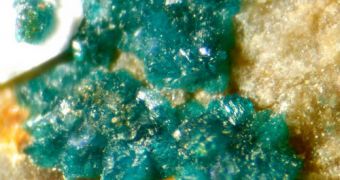Scientists have come up with a new tantalizing hypothesis about a new state of matter and space-time. "Twenty five years ago we thought we understood everything about how matter changes phase. Then along came an experiment that opened up a whole new world", said Xiao-Gang Wen at the Massachusetts Institute of Technology.
He and Michael Levin at Harvard University watched how electrons moving in the interface between two semiconductors behaved as though they were made up of particles with only a fraction of the electron's charge, a phenomenon named fractional quantum hall effect (FQHE) that points they may not be elementary particles.
This 1998 discovery made Wen suspect that FQHE could indicate a new type of matter.
Different matter phases are determined by atomic organization: in a liquid, atoms move freely, while in a solid are rigidly located in a lattice. "If you take a snapshot of the position of electrons in an FQHE system they appear random and you think you have a liquid. The position of the electrons in this material appears random like in a liquid, but they also move in well-defined steps" Wen said. The researchers believed FQHE systems represented a state of matter characterized by entanglement, the particles being tied to each other in a complicated manner across the entire material, a different type of matter. They looked at electrons as not really elementary, but emerging at the ends of long "strings". In their model, such strings move freely "like noodles in a soup" in huge "string-nets".
The simulations of string-nets not only gave rise to conventional particles and fractionally charged quasi-particles but they also vibrated, producing a wave matching Maxwell's equations, describing the behavior of light. "A hundred and fifty years after Maxwell wrote them down, here they emerged by accident," Wen said.
The model also delivered other elementary particles, like quarks, which build protons and neutrons, and the particles behind some of the fundamental forces, such as gluons and the W and Z bosons.
Could this model be applied for the whole universe?
"Suddenly we realized, maybe the vacuum of our whole universe is a string-net liquid. It would provide a unified explanation of how both light and matter arise", said Wen.
This theory states that elementary particles are not the fundamental "bricks" of matter but that they emerge from the deeper structure of the non-empty vacuum of space-time.
Joel Helton's group at MIT might have already found a material confirming the "string-net liquid" model. This candidate could be a dark green crystal found in Chile's mountains in 1972 named herbertsmithite. Herbertsmithite is very odd as its electrons are located in a triangular lattice.
Normally, electrons line up so that their spins are located in the opposite direction to that of their immediate neighbors, fact impossible in a triangle, where neighboring electrons spin in the same direction, like in string-net liquid model. "Although herbertsmithite exists in nature, the mineral contains impurities that disrupt any string-net signatures," said Young Lee, one member of the team.
To achieve a pure sample in the lab "It took us a full year to prepare it and another year to analyze it", he added. The team checked how the material reacted to magnetization, when a magnetic field was applied on it. In ordinary matter, below about 26 ?C the spins of the electrons stop fluctuating, a phenomenon named magnetic order. But herbertsmithite did not display such transition, even at just a fraction above absolute zero.
Heat conduction of ordinary matter is linked to temperature: it changes below a certain temperature as the material structure shifts. Herbertsmithite did not follow the rule, and unlike in other types of matter, in its lowest energy state, it presented no discernible order.
The team is going to determine the position of individual electrons and long-range entanglement by sending neutrons at the crystal and watching their movements. "We want to see the dynamics of the spin. If we tweak one [electron], we can see how the others are affected", Lee said. "Even if herbertsmithite is not a new state of matter, we shouldn't be surprised if one is found soon, as many teams are hunting for them. People wrongly assume that particle accelerators are the only places where big discoveries about matter can be made. Accelerators are just recreating conditions after the big bang and repeating experiments that are old hat for the universe. But in labs people are creating [conditions] that are colder than anywhere that has ever existed in the universe. We are bound to stumble on something the universe has never seen before", said Michael Freedman, 1986 winner of the Fields medal, the highest prize in mathematics, and a quantum computing specialist at Microsoft Station Q at the University of California, Santa Barbara.

 14 DAY TRIAL //
14 DAY TRIAL //